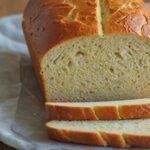Introduction
Poha Recipe
What is Poha?
Poha is a beloved Indian breakfast dish made from flattened rice, which is also known as “beaten rice” or “chivda.” This light, fluffy dish is quick to prepare and is packed with flavors. Whether you’re a busy professional or a homemaker looking for a nutritious breakfast option, Poha is a fantastic choice.
Popularity and Cultural Significance
Poha holds a special place in Indian cuisine, especially in the western states of Maharashtra and Gujarat. It’s not just a breakfast staple but also a popular snack. The simplicity and versatility of Poha make it a go-to dish for many households.
Ingredients
Main Ingredients
- 2 cups Poha (flattened rice)
- 1 large onion, finely chopped
- 2 green chilies, finely chopped
- 1 medium potato, peeled and diced
- 1/4 cup peanuts
- 1 tsp mustard seeds
- 1 tsp turmeric powder
- Salt to taste
- 2 tbsp oil
- Fresh coriander leaves for garnish
- Lemon wedges
Optional Ingredients
- Curry leaves
- Grated coconut
- Green peas
- Pomegranate seeds
Health Benefits of Ingredients
The ingredients used in Poha are not only flavorful but also nutritious. Flattened rice is a good source of carbohydrates and provides a quick energy boost. Onions and chilies add antioxidants, while peanuts contribute protein and healthy fats. The addition of turmeric offers anti-inflammatory benefits.
Preparation Steps
Washing the Poha
Rinse the Poha in a sieve under running water for about 1-2 minutes. Allow it to drain completely, ensuring that it absorbs just enough moisture without becoming mushy.
Prepping the Vegetables
Finely chop the onions and green chilies. Peel and dice the potatoes into small cubes. If you’re using optional ingredients like green peas, have them ready as well.
Seasoning and Spices
Prepare your spices: mustard seeds, turmeric powder, and salt. These basic spices are key to the authentic flavor of Poha.
Cooking Instructions
Cooking the Vegetables
- Heat oil in a large pan over medium heat.
- Add mustard seeds and let them splutter.
- Add the peanuts and fry them until golden brown.
- Add the chopped onions and green chilies, sautéing until the onions are translucent.
- Add the diced potatoes and cook until they are tender.
Adding Poha to the Mix
- Once the vegetables are cooked, add turmeric powder and salt.
- Gently mix in the washed and drained Poha.
- Cook for another 2-3 minutes, stirring occasionally, until the Poha is heated through.
Final Touches
- Garnish with fresh coriander leaves.
- Serve hot with lemon wedges on the side for an extra tangy flavor.
Serving Suggestions
Traditional Ways to Serve Poha
Poha is traditionally served with a sprinkle of fresh coriander and a wedge of lemon. Some regions also add a handful of fresh pomegranate seeds on top for a burst of sweetness.
Modern Twists
For a modern twist, you can serve Poha with a dollop of yogurt or top it with a fried egg for added protein. Another variation is to mix in some roasted nuts and seeds for an extra crunch.
Nutritional Information
5 Best Healthy Breakfasts to eat?
Calorie Count
A serving of Poha (approximately one cup) contains around 250-300 calories, making it a light yet satisfying meal.
Macronutrient Breakdown
- Carbohydrates: 35-40 grams
- Protein: 5-7 grams
- Fat: 10-12 grams
Micronutrient Highlights
Poha is rich in iron and provides a good amount of vitamins like B1 and B6. The addition of vegetables boosts the fiber content and adds essential vitamins and minerals.
Variations of Poha
Kanda Poha
A version of Poha that emphasizes onions (“kanda” in Marathi), often enjoyed in Maharashtra.
Batata Poha
This variation includes diced potatoes (“batata” in Marathi), adding a hearty element to the dish.
Mixed Vegetable Poha
A colorful and nutritious variation with a mix of vegetables like carrots, peas, and bell peppers.
Tips for the Perfect Poha
Ensuring the Right Texture
Make sure to rinse the Poha just enough to soften it without making it soggy. Allow it to drain completely before cooking.
Balancing Flavors
Taste and adjust the seasoning as needed. A squeeze of lemon juice at the end enhances the overall flavor.
Common Mistakes to Avoid
- Over-soaking the Poha, which can make it mushy.
- Not frying the peanuts enough, resulting in a lack of crunch.
- Skipping the garnishes, which add freshness and flavor.
Frequently Asked Questions
How do I prevent Poha from becoming mushy?
Rinse the Poha briefly and let it drain completely. Avoid soaking it in water.
Can I make Poha in advance?
Yes, you can prepare Poha in advance and store it in the refrigerator. Reheat it gently in a pan before serving.
Is Poha suitable for a weight loss diet?
Poha is low in calories and can be included in a weight loss diet, especially if you add plenty of vegetables.
What can I substitute for peanuts?
You can use cashews or roasted chickpeas as a substitute for peanuts.
How can I make Poha more flavorful?
Add curry leaves, grated coconut, or a pinch of garam masala to enhance the flavor.










